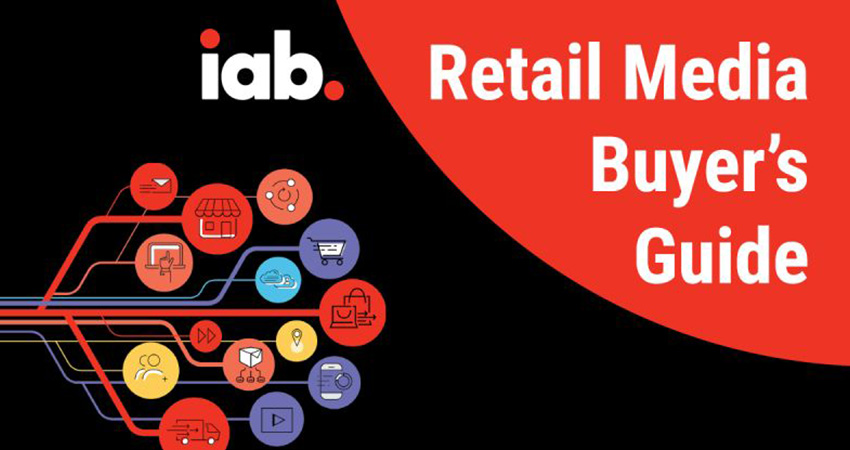Given the explosion in retail media networks, and the vast potential of their rich first-party data insights, the Interactive Advertising Bureau (IAB) has released a buyer’s guide that explains the market and the players, helping brand advertisers more intelligently build media planning and buying strategies.
The buyer’s guide was created with participation of IAB members from brands, retailers, agencies and ad tech firms. Participants included representatives from Kroger, Albertsons, Walgreens, Gap, Best Buy, Coca-Cola, Nordstrom, Roku, L’Oreal, Google, The Trade Desk, Pacvue, Publicis and Lotame, among many others.
“The objective of the buyer’s guide is to redefine audience strategy for onsite, offsite and in-store media,” said Jeffrey Bustos, VP of measurement addressability data for IAB. “We’re seeing a lot of retailers and brands trying to understand how to better align their internal and external teams to create a cohesive omnichannel experience for shoppers.”
Closed Loop Measurement a Differentiator
Bustos said a lot of the focus in the guide is on getting advertisers to understand the value of retail media networks’ closed-loop measurement capabilities, and how it enables them to connect the dots between ad exposure and sales.
“I might spend a lot of time on Amazon and Netflix and Disney, and also on news and music sites, much more than on shopping apps, but eventually I check out an item,” Bustos said. “Retailers and brands need to work on how you bring collaboration through data clean rooms, allowing brands to tap into audience data to target across channels with the same consistent message, tying in measurement. It’s difficult to attribute any value to the various touchpoints without a closed loop system, which is the differentiation of retail media networks.”
Standards for Measurement Transparency
Separately, Bustos said IAB started working with the Media Rating Council this past April to form a retail media measurement working group, again with representation across retailers, brands, agencies and adtech. “We’re identifying what standards and business requirements retail media needs to have more consistent, transparent measurement.”
The measurement standards effort is needed, Bustos said, because of how large and competitive the retail media network space is growing. “It ensures transparency in measurement and targeting allows brands to compare metric across RMNs and automate a lot of the media buys,” he said.
The Power of Full Funnel Performance
Dan Mayer, VP of media platform for Kroger Precision Marketing (KPM), said it takes an organization like IAB to orchestrate the conversation across all different stakeholder groups in digital advertising and develop industry consensus around retail media networks. KPM sits under 84.51°, Kroger’s data science unit.
“Retail media is making advertising more performance-based, raising the expectations of what brands get,” said Mayer, adding that a representative from 84.51° co-chaired the effort, along with someone from Publicis. “It’s not strictly about product listing ads in the ecommerce experience, but also about finding the same performance expectations at the top of the funnel, including the influence of streaming TV. We’re bringing the Kroger audience into platforms like Roku and measuring the impact. This is powerful leverage for agencies who can now optimize streaming TV campaigns.”
Mayer said KPM has access to anonymized shopper data from 62 million households across 35 states, mostly focused on endemic brands, from major CPGs to smaller companies in the long tail. He said the quality of first-party insights has drawn interest from outside brands, including in automotive and financial services.
“We know our shoppers really well, and brands in other categories are interested in tapping those insights,” he said. “But we’re very protective of that relationship with our shoppers, to make sure we’re not exposing them to irrelevant categories.” He added 84.51° powers both shopper insights and measurement within KPM, the two creating a flywheel effect of optimized audience modeling across a variety of channels.
Walmart Connect Draws Off Luminate Data
Linda Lomelino, senior director of product at Walmart Data Ventures, said Walmart Connect, the company’s retail media network, taps the power of its Luminate data science platform to help clients inform their ad strategies. Luminate was the first product output from Walmart Data Ventures, released last fall.
“We’ve seen clients learn more and more about customers and as a result, their advertising strategy is being shaped by powerful customer data,” Lomelino said. “They’re seeing a lot of fantastic ROI on the Walmart Connect side.”
Future Potential for Generative AI
Both Mayer and Bustos said the potential for generative AI to automate various functions in RMNs is just starting to be explored.
“We’re excited about the opportunity for creative optimization, audience insights and reporting,” Bustos said. “But we need to find ways to ensure a reduction of the data bias in any AI model, in any medium, for instance to understand nuances in geographic data.”
“It’s being looked at,” Mayer said. “There are operational efficiencies that can be applied to our teams or advertisers, with the potential to automate some campaign steps around creative and how it’s sourced.”

